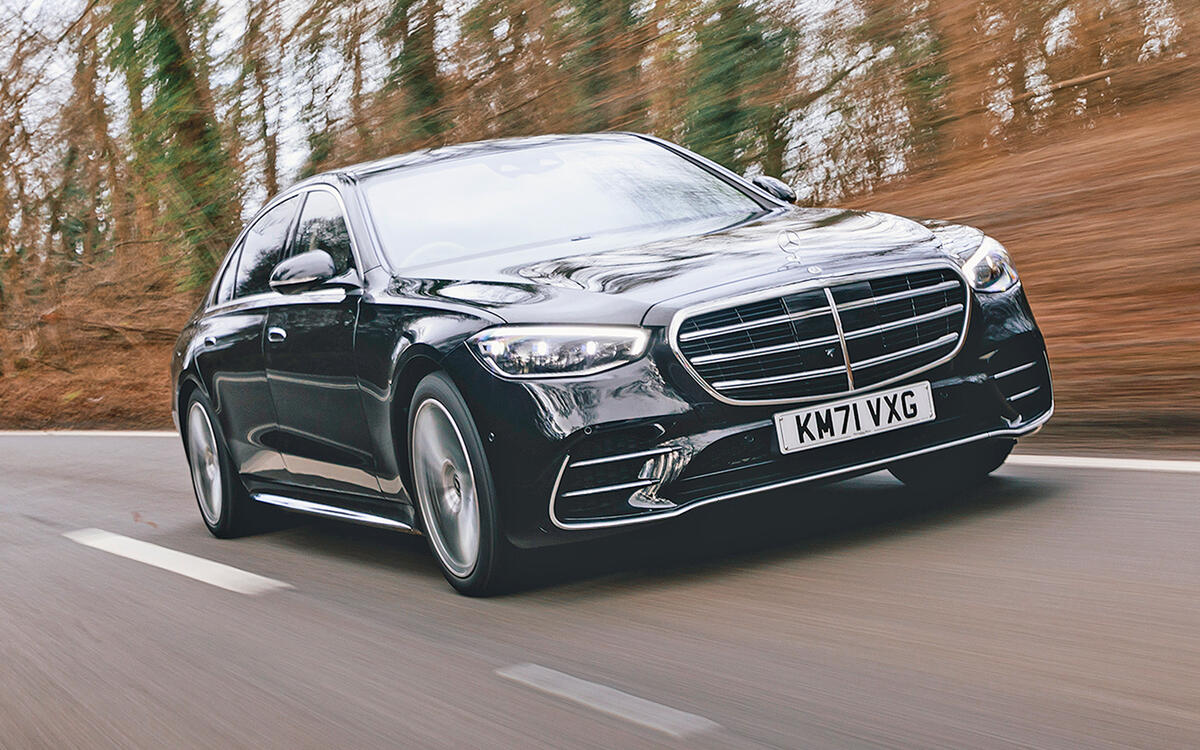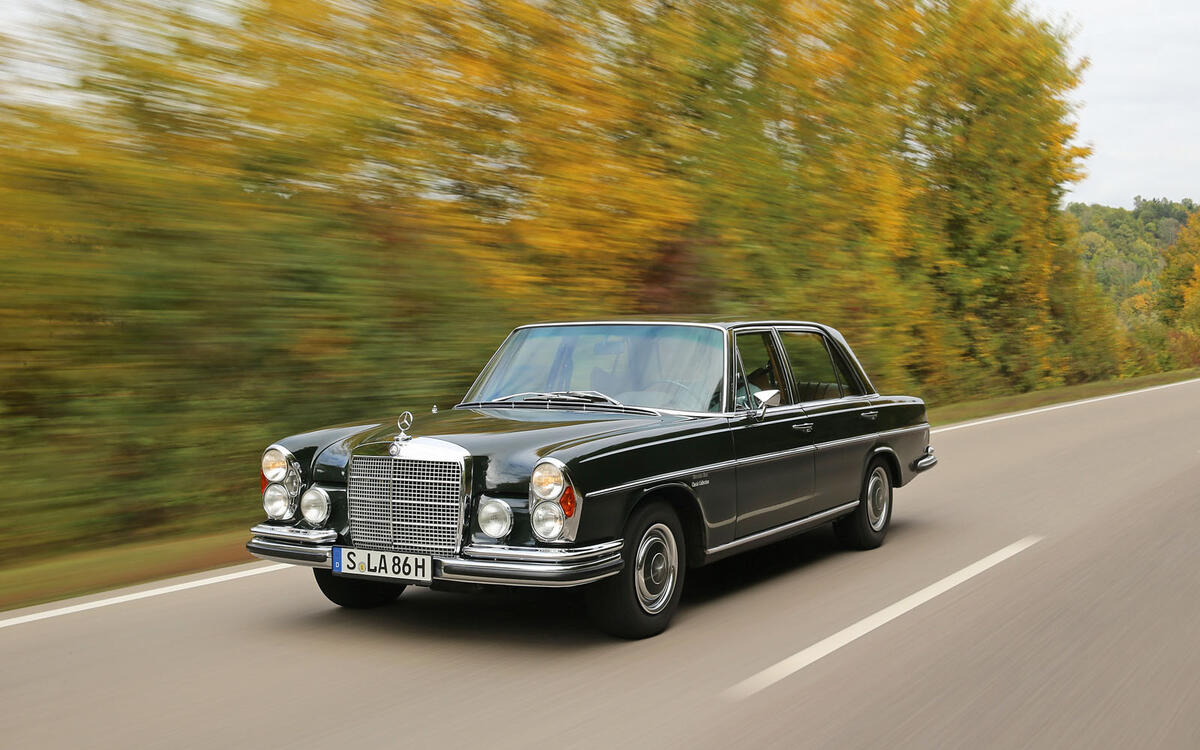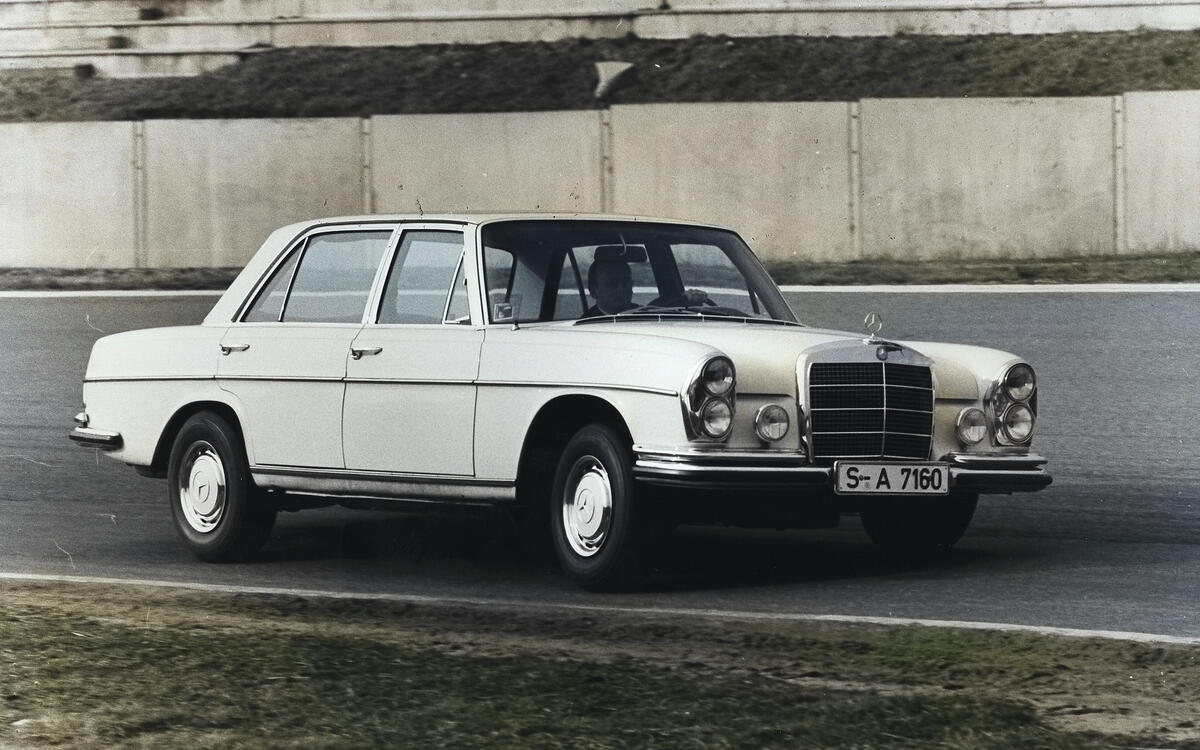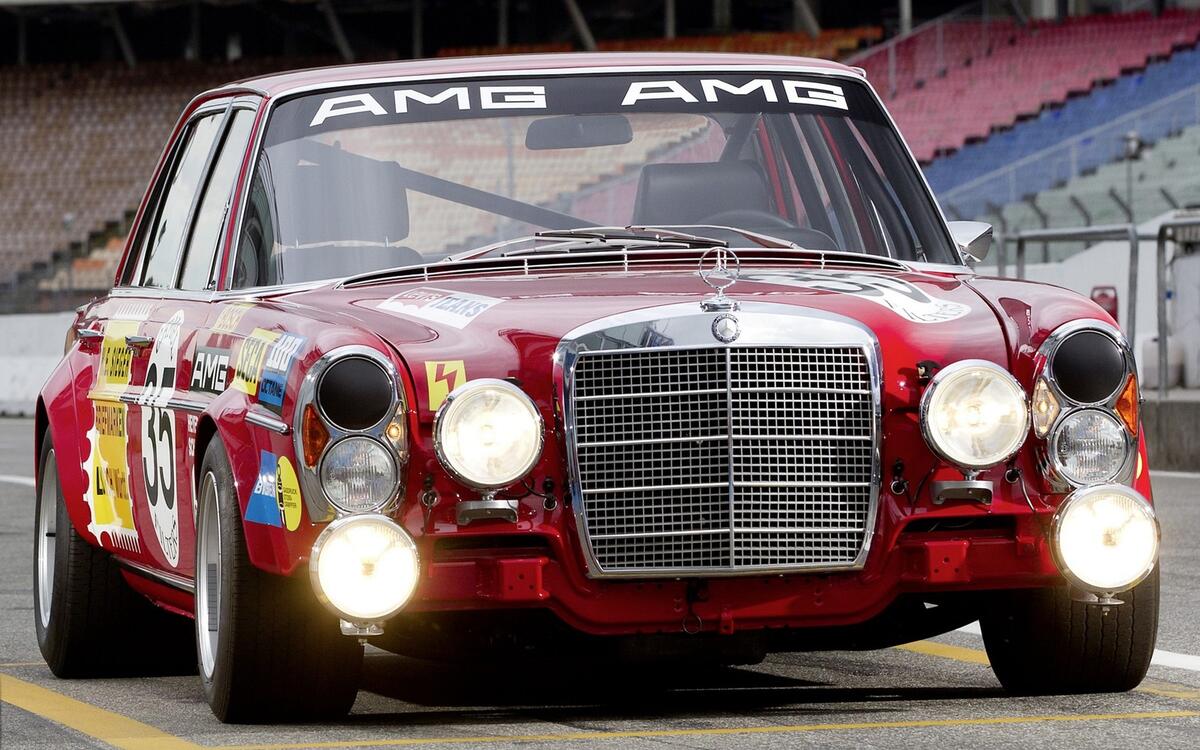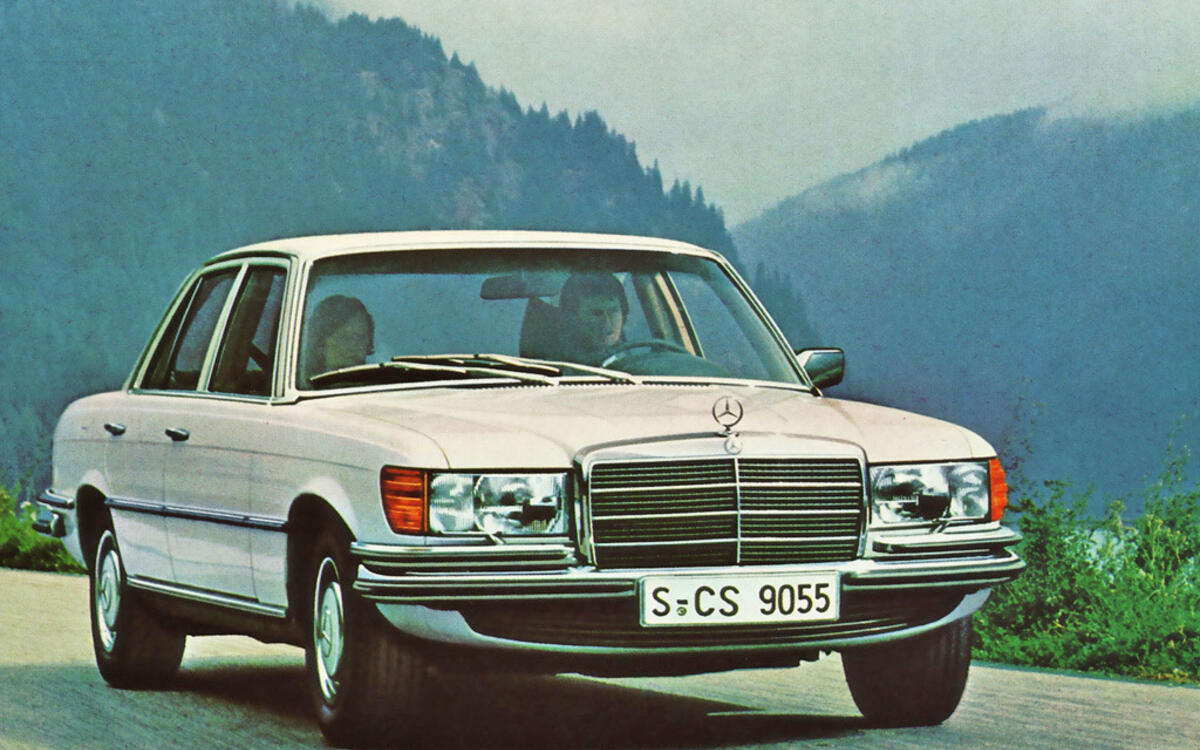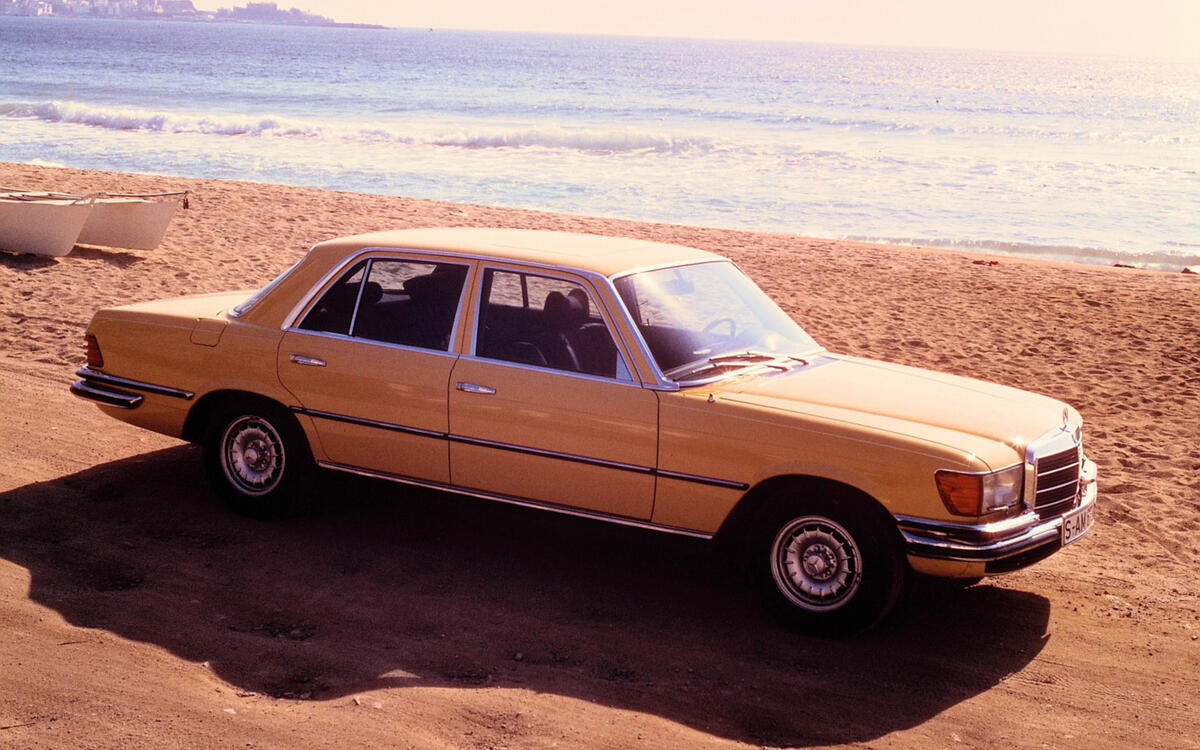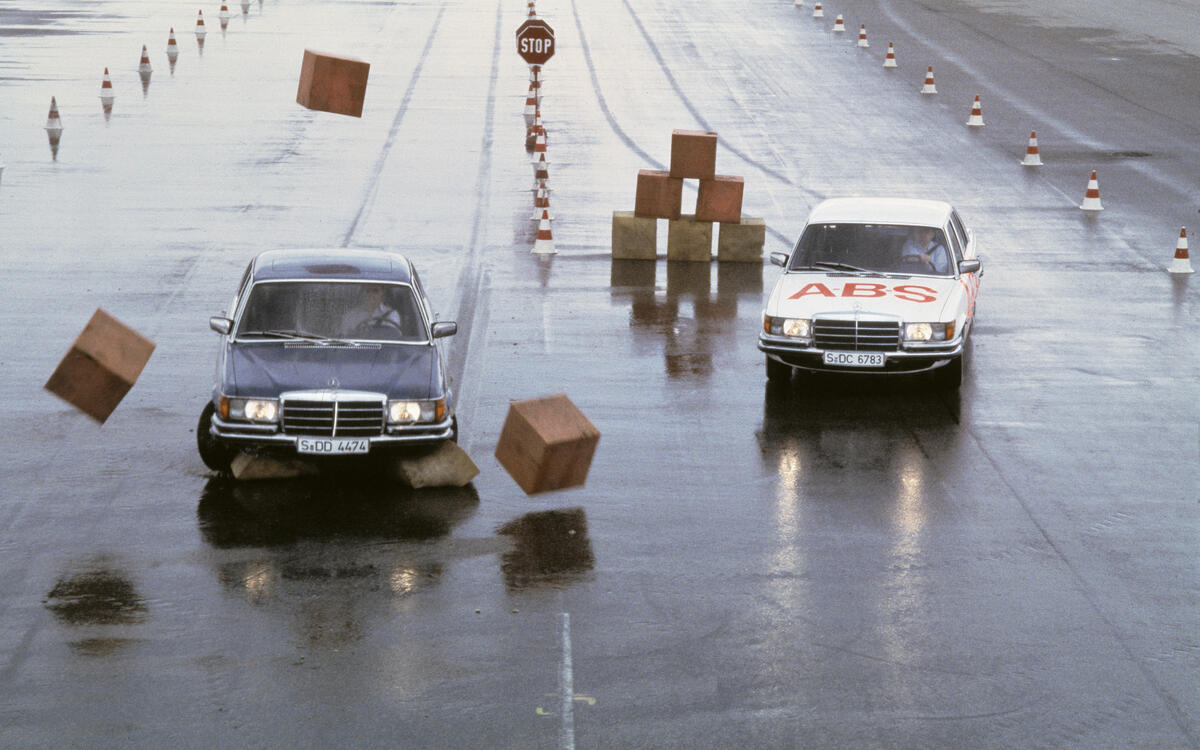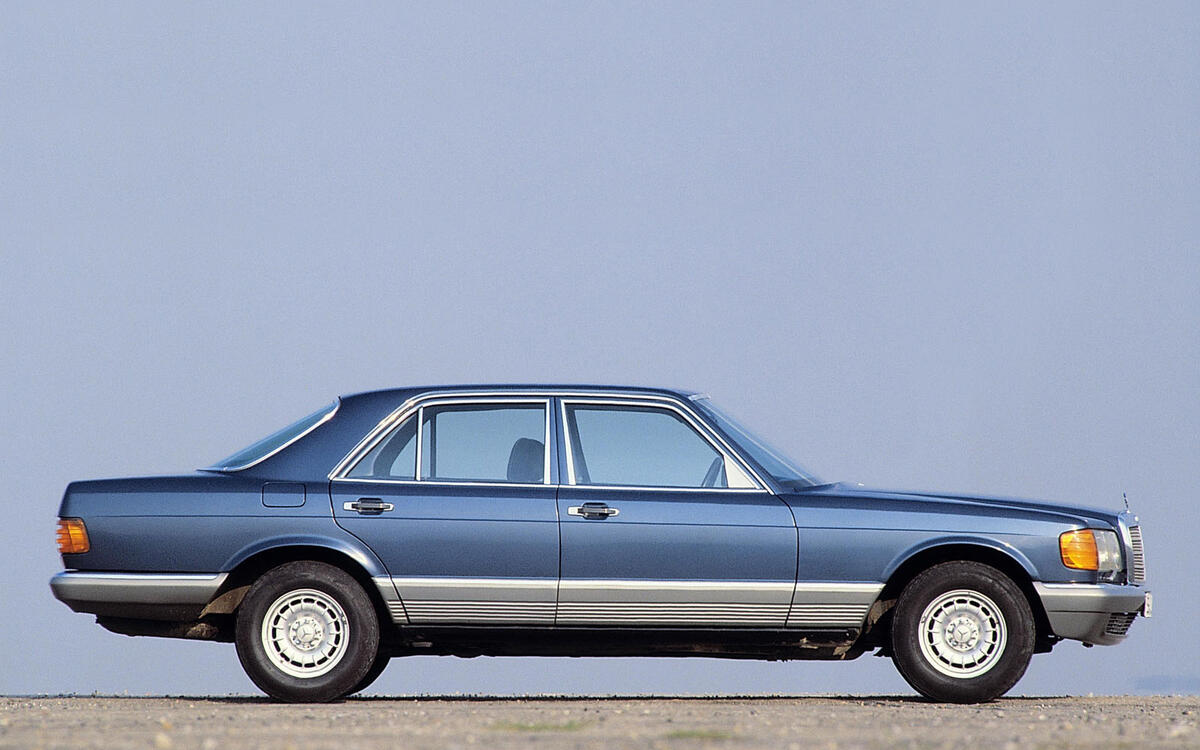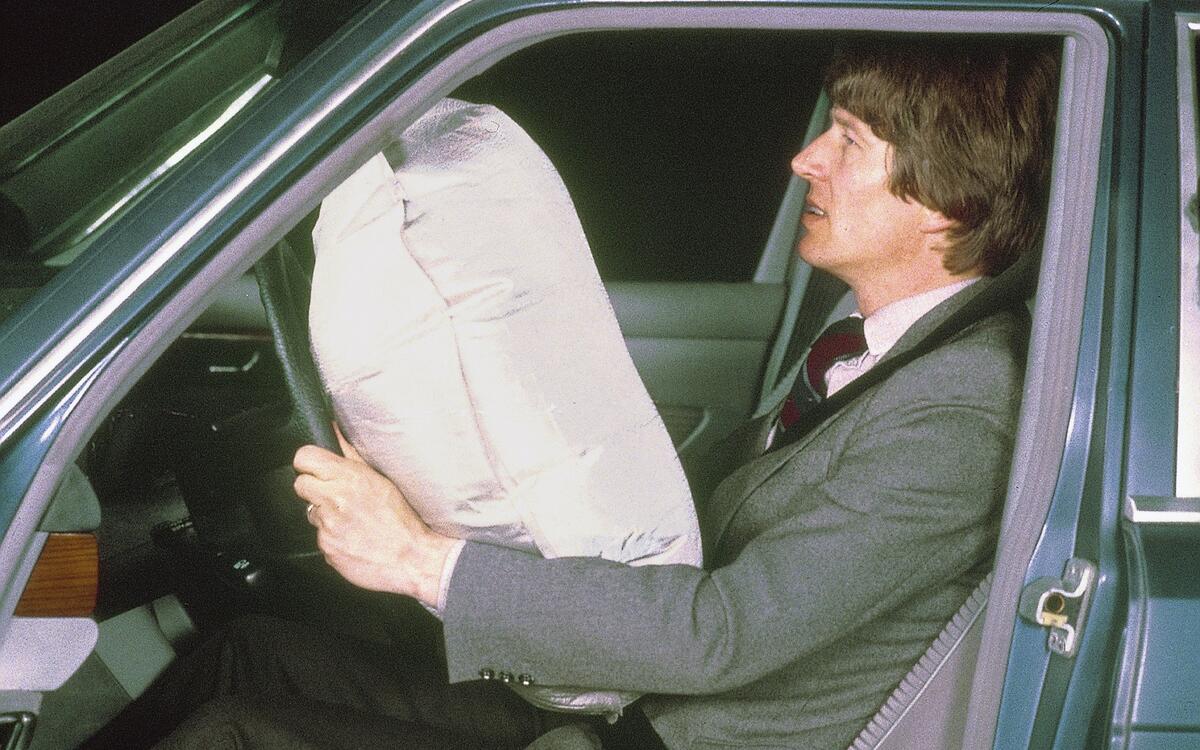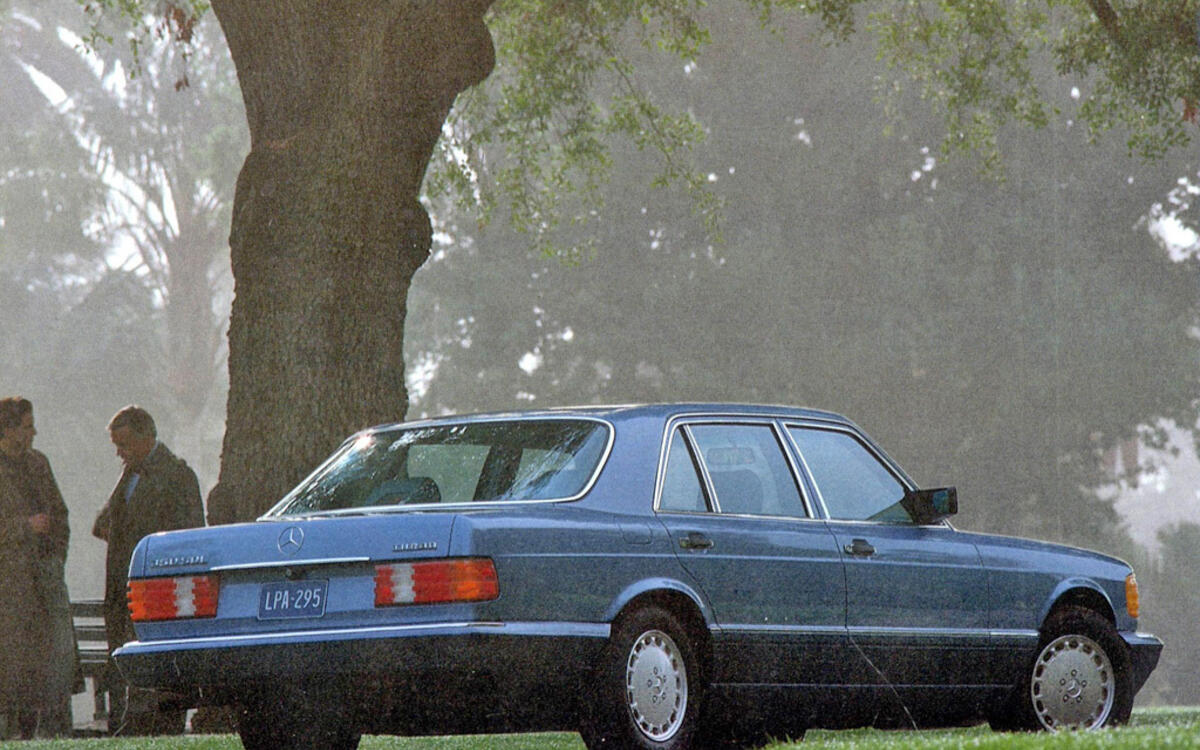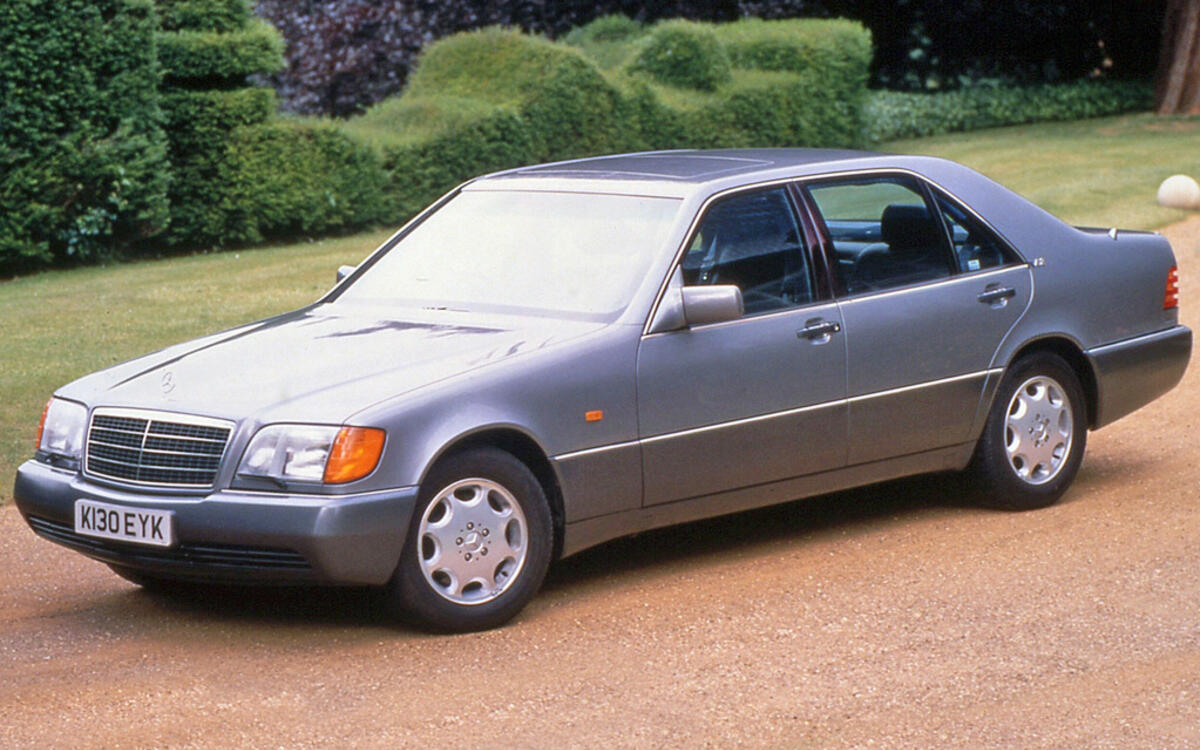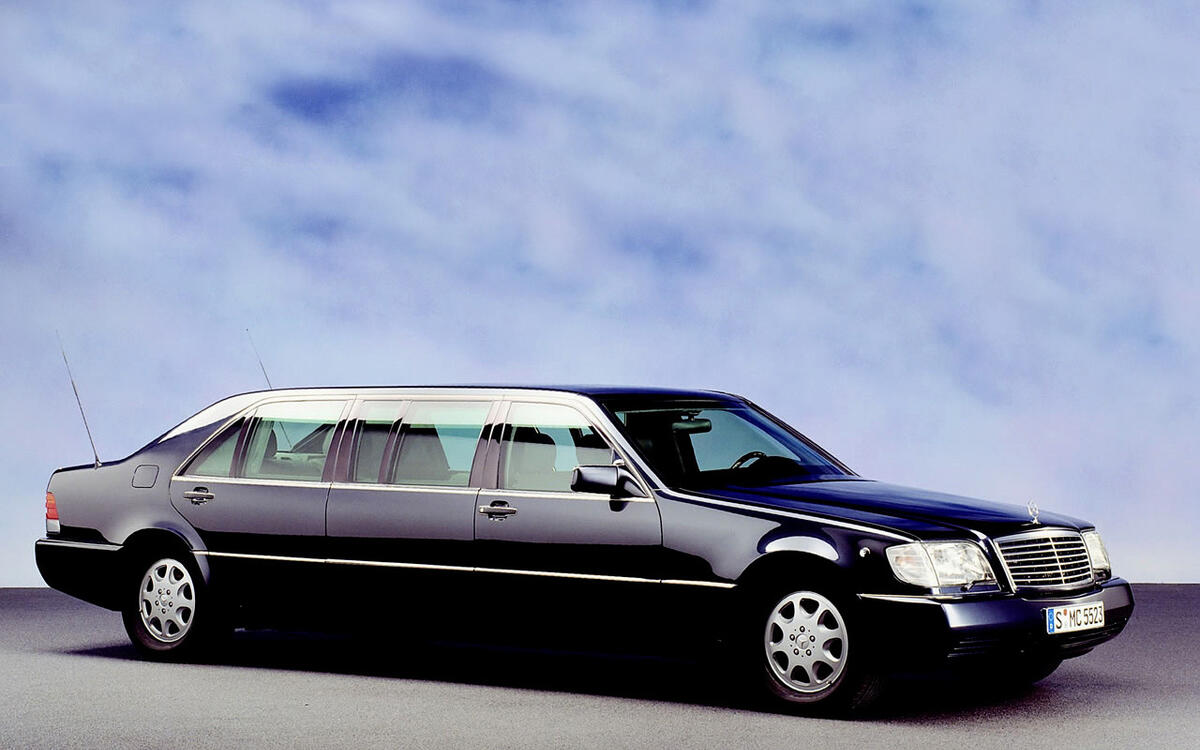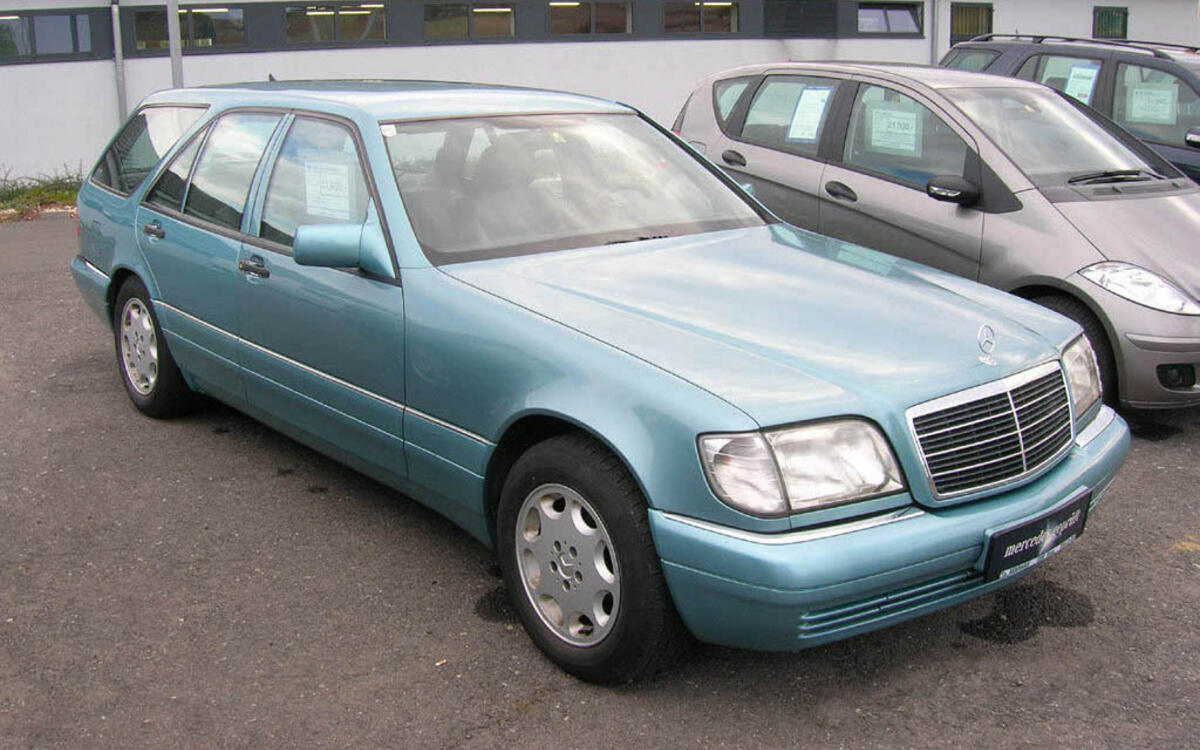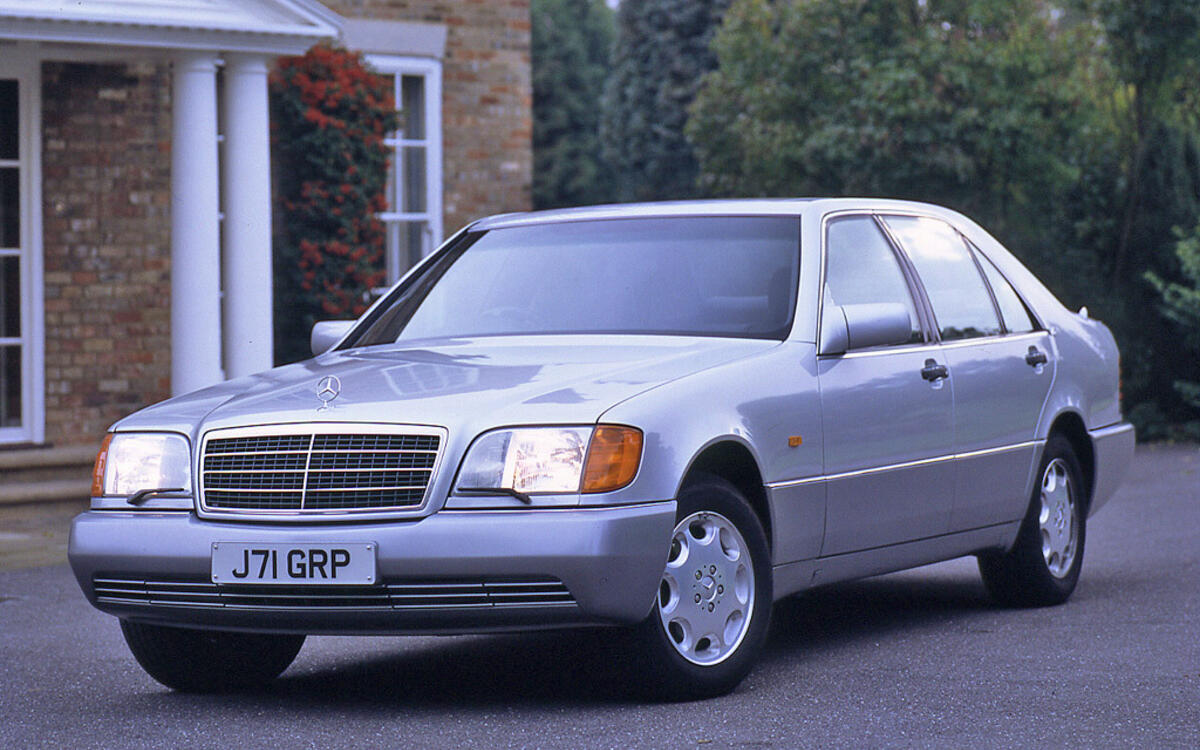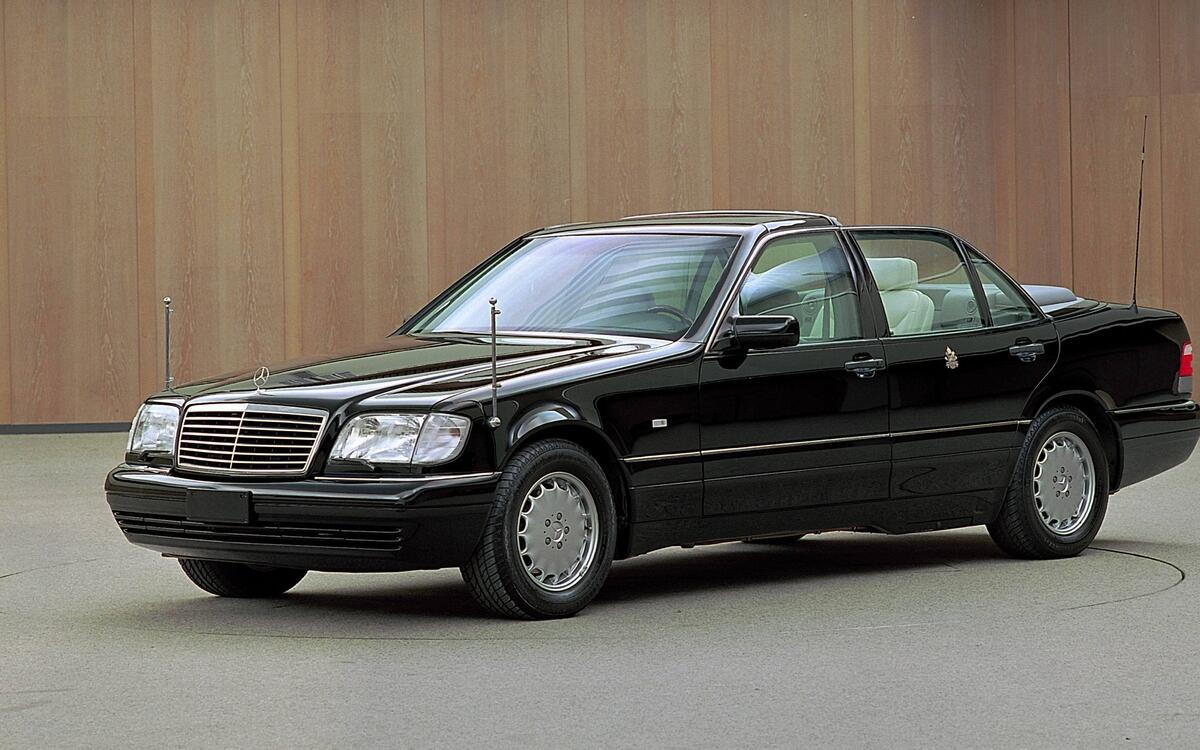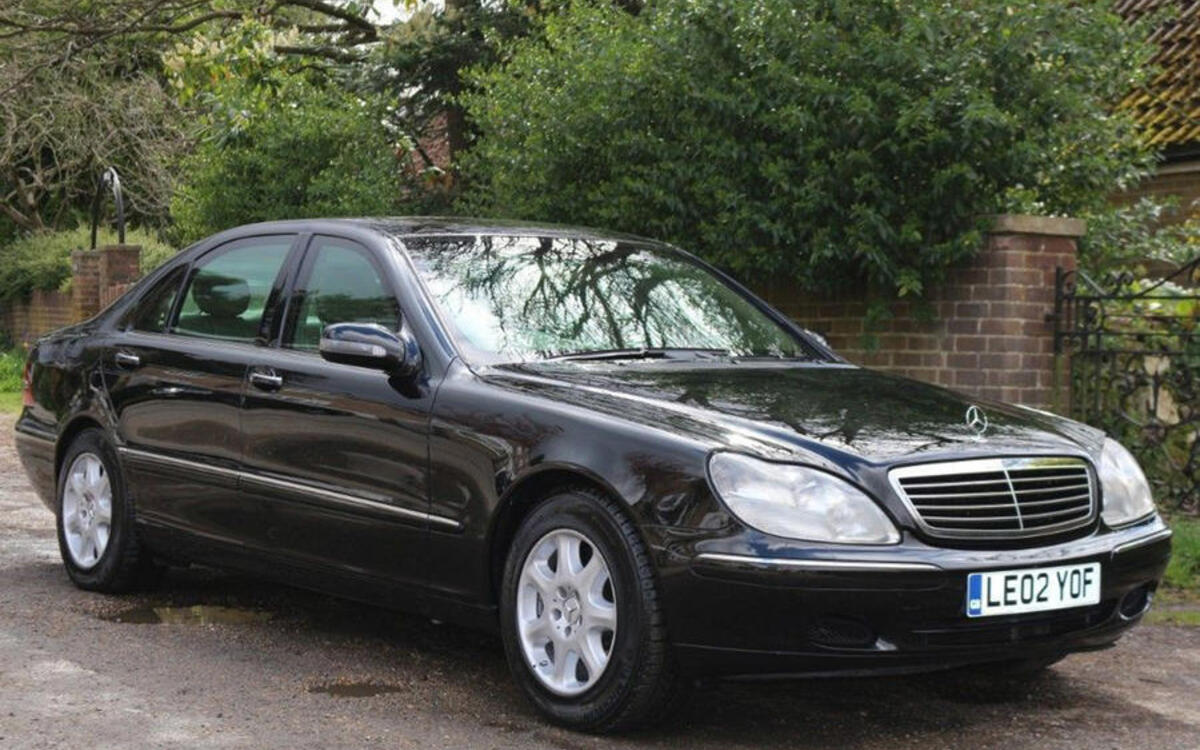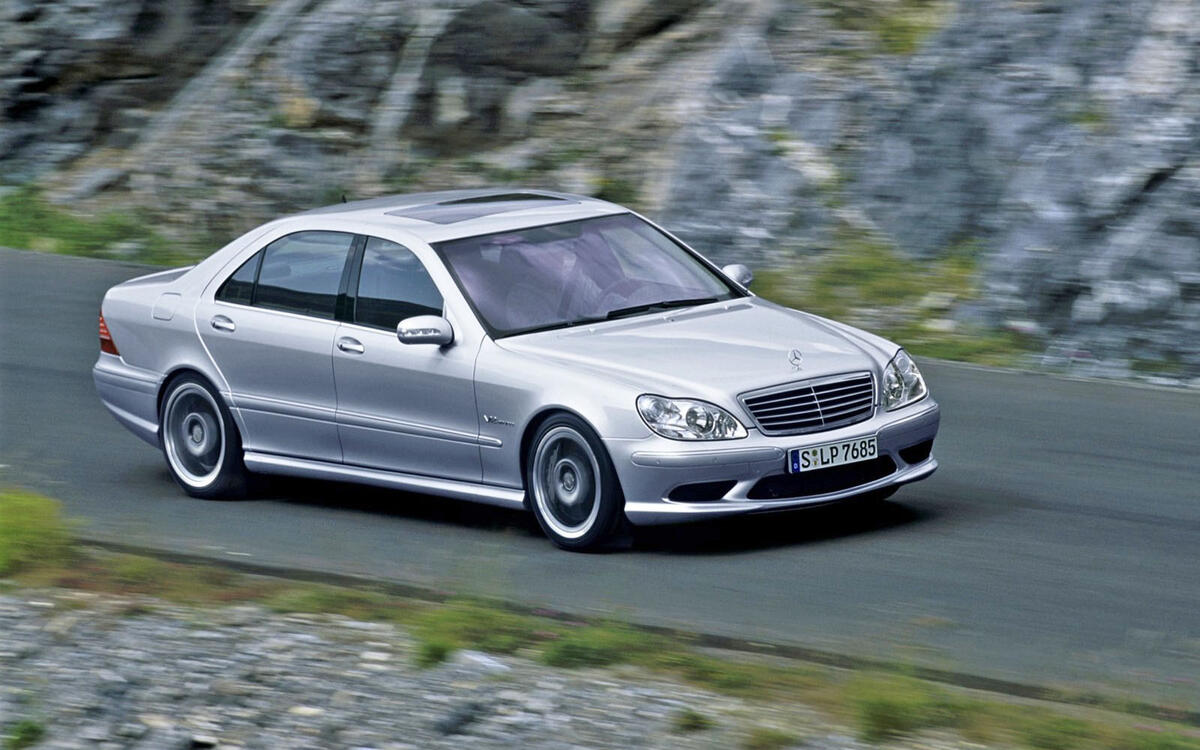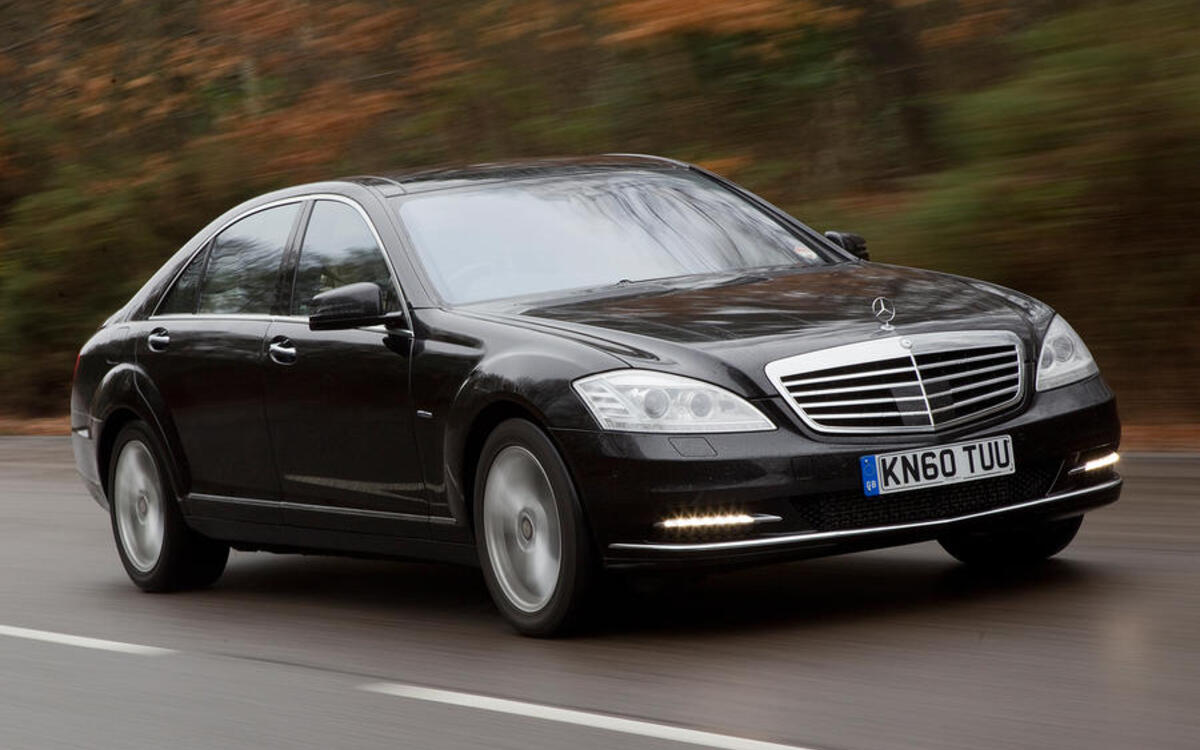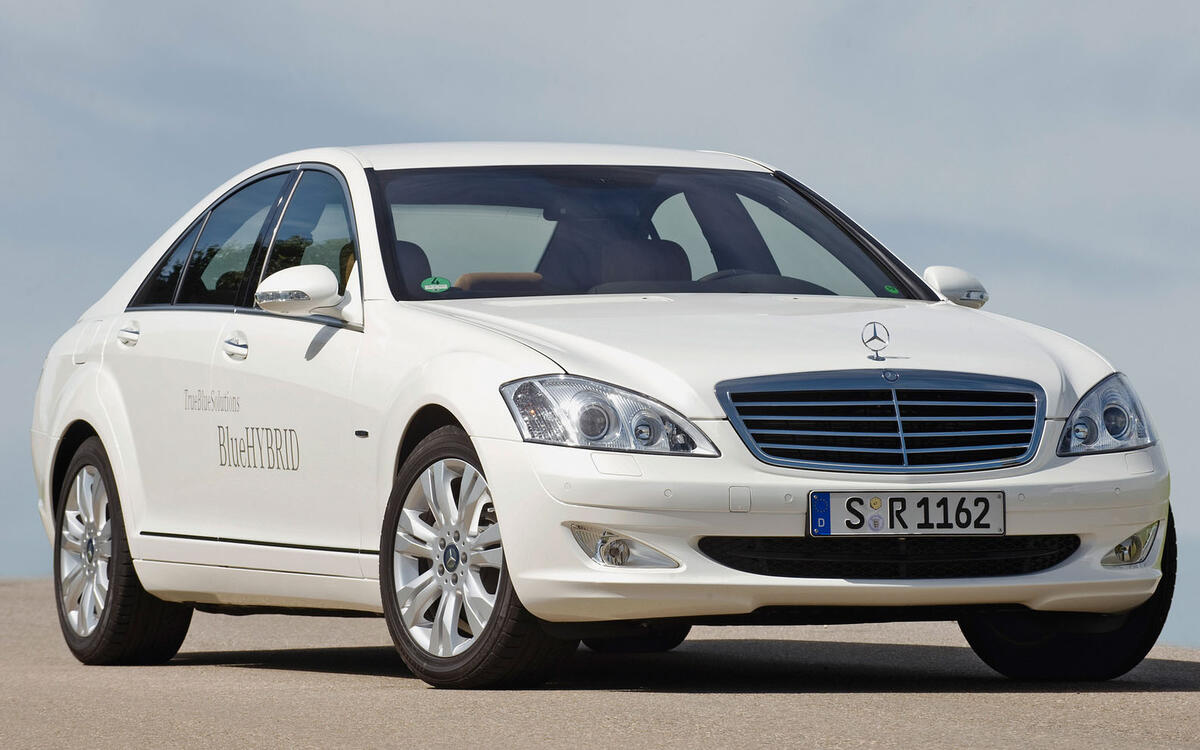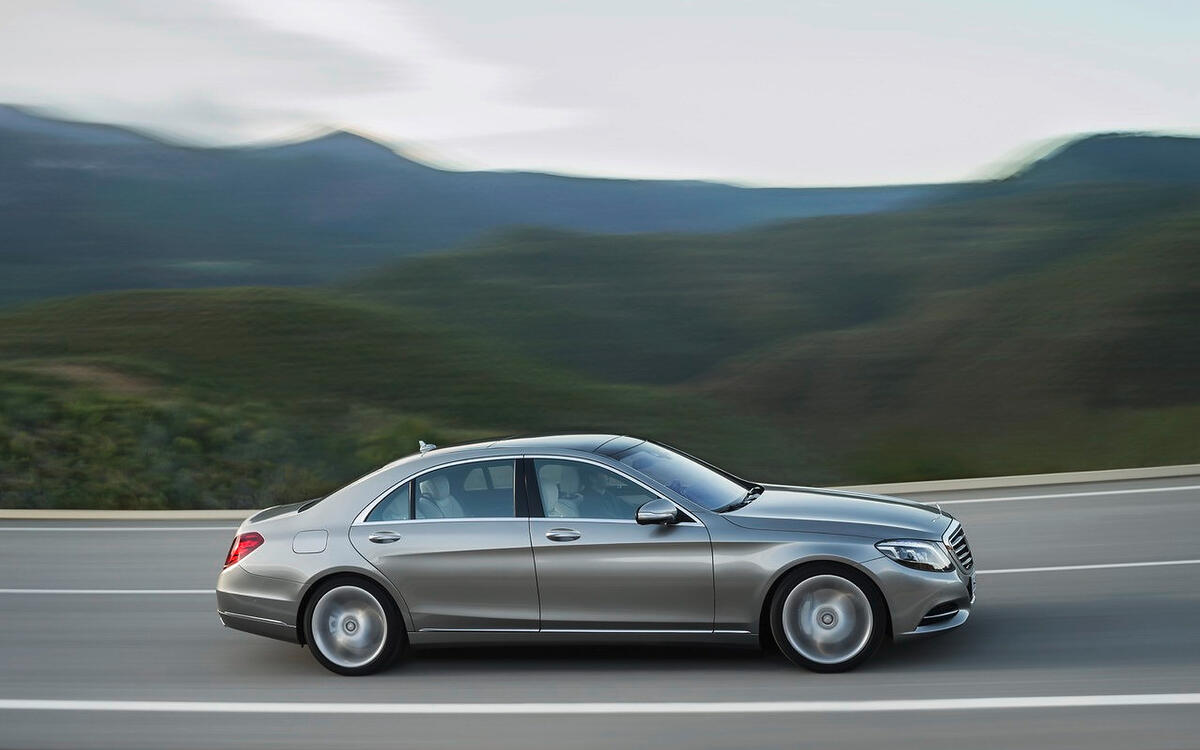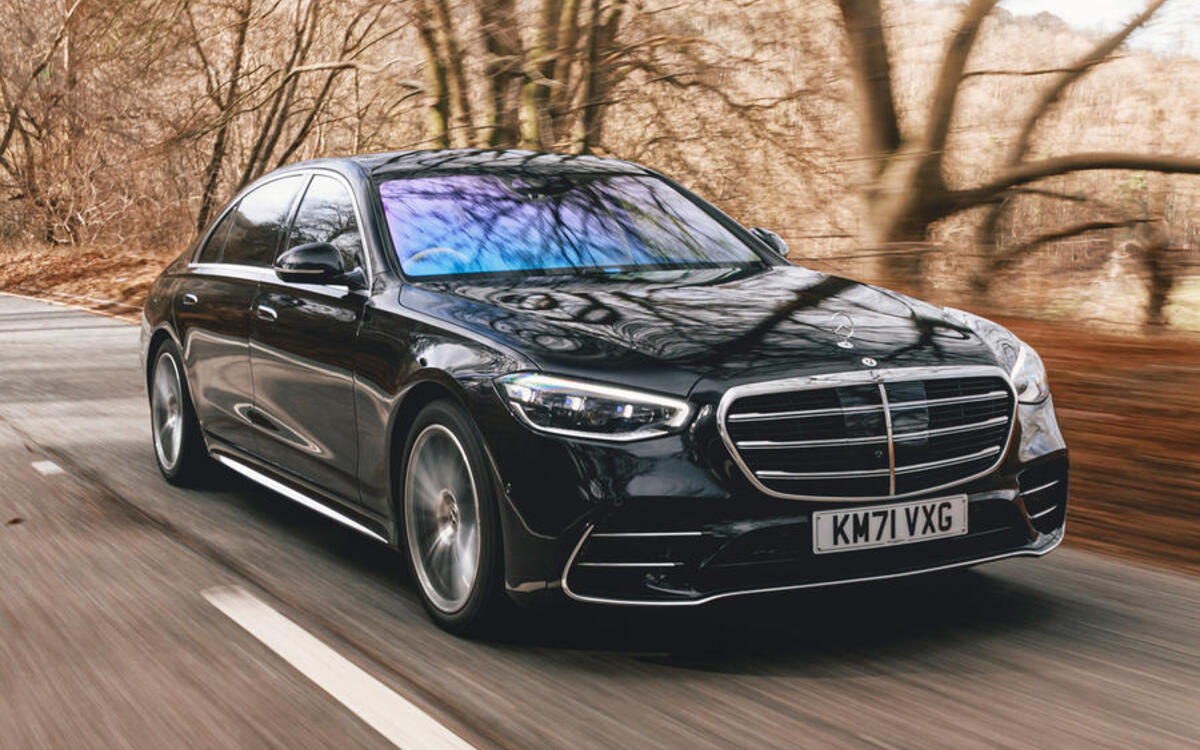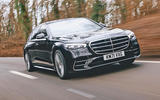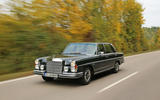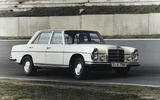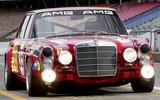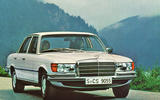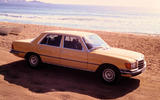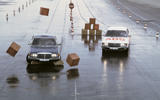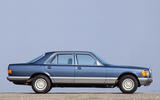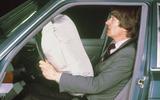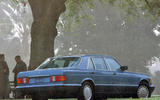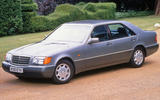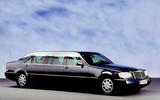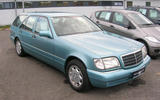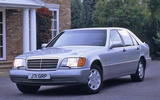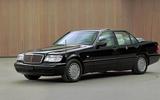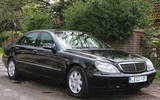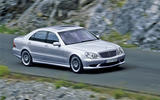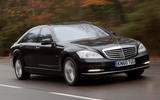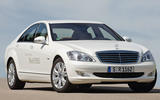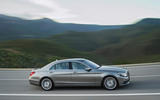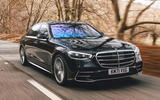 Slide of
Slide of
The Mercedes S-Class has become a staple at the luxury end of the car market
Yet it’s also evolved to meet the changing demands of different generations. Here’s a rundown of the S-Class’ history from the wonderful to the weird in chronological order.
 Slide of
Slide of
W108
This is where the S-Class really kicked off after the earlier Ponton model and stylist Paul Bracq’s elegant saloon has set the tone for every subsequent generation. The W108 started off in 1965 with modest six-cylinder engines and you could choose fuel injection for the 250SE, which was a direct result of the fuel system developed for the 300SL sports car.
When Mercedes added air suspension to the S-Class, it earned a new chassis code, so became the W109. Based on the same standard or long wheelbase platforms as the W108, the W109s were also offered with power windows and were only sold with the larger six-cylinder engines as 300SE models, though the motor was a 2.8-litre unit.
 Slide of
Slide of
300 SEL 6.3
A Q-car if ever there was one, the 300SEL 6.3 married the top of the line S-Class body with the massive V8 engine form the 600 limo range. In an instant, Mercedes created a car that could shift from rest to 60mph in 6.5 seconds and hit 141mph, all while looking like a sober bank manager’s choice of wheels.
The only real downside of this hot rod in a saloon body was the price. When it was launched, the 300SEL 6.3 cost £7743, which was more than the contemporary Ferrari 365GTB/4. This didn’t stop Mercedes selling 6526 of these super saloons.
 Slide of
Slide of
Red Pig
‘Die Rote Sau’ was the nickname given to the 300 SEL saloon tuned by AMG, creating a lasting legacy between the two companies. Translated as ‘Red Pig’, the racing car used a 6.8-litre V8 engine tuned by AMG to 428bhp rather than the standard 6.3-litre V8’s 250bhp.
That sort of power, plus many changes to the suspension and body stiffening, helped the Red Pig take a class win and second overall in its first ever outing at Spa in 1971. Fittingly, it was sold to be used for testing jet aircraft landing gear, but the car was later scrapped.
 Slide of
Slide of
W116
The W116 generation of S-Class took a discernible step away from the rest of the Mercedes saloon car range in its styling. This was a conscious decision to elevate the company’s luxury model and it was the first to be properly christened as the S-Class.
Crowned European Car of the Year in 1974, it showed how far ahead the W116 was of its competition. An SE denotes a car with fuel injection fitted in place of carburettors, while the SEL had a longer wheelbase for more rear passenger space. Six-cylinder engines were the frugal choice, but the 350 and 450 with 3.5- and 4.5-litre V8s respectively were the ones to have.
 Slide of
Slide of
450 SEL 6.9
Just as with the previous generation of S-Class, Mercedes couldn’t help itself from introducing a subtle high performance model. For the W116, it was the 450 SEL 6.9, which used a huge 6834cc V8 engine with 286bhp on hand to deliver 0-60mph in 7.5 seconds. It topped out at 140mph, making it one of the fastest saloon cars in the world at the time.
The 6.9 was also one of the most expensive cars on offer, costing twice as much as a Jaguar XJ12. However, for the money, you did get oleopneumatic self-levelling rear suspension. In all, Mercedes shifted 7380 SEL 6.9s. Owners would include King Juan Carlos of Spain and racecar driver James Hunt.
 Slide of
Slide of
ABS brakes
Jensen was first to offer ABS anti-lock brakes on a production car in 1968, but a decade later Mercedes was first to provide it on a serious scale. Given the cost of this early system developed with Bosch, it was only available on the S-Class as an option, though it was standardised across the S-Class line-up and other Mercedes models in 1984.
The ABS system was one of many safety improvements made with this S-Class, which also featured a full padded steering wheel and windscreen pillars to improve occupant protection.
 Slide of
Slide of
W126
Arguably the most graceful S-Class of the lot, the W126 came from an era when Mercedes put build quality far ahead of price. This meant the W126 range was never a cheap option and the top-of-the-range 560SEL cost a cool £46,144 at its launch in 1986.
Prior the 560, the 500 was the head of the S-Class range for this generation, ably supported by a straight-six 280 and V8-powered 380. With the refresh in 1986, the range changed to 300, 420, 500 and 560. It was also the generation of S-Class that brought the world power seat controls with buttons in the shape of the seat to make adjustment simpler. By the time the W126 ended production, 818,036 had been built.
 Slide of
Slide of
SRS
If you’ve ever wondered why many airbags in cars have the letters ‘SRS’ on them, you have Mercedes to thank. It introduced the Supplementary Restraint System, as it called the airbag, as an additional safety feature along with a seat belt tensioner to hold the driver in place more securely.
The SRS was offered as an expensive option from late 1980, but by 1992 a driver’s airbag was standard on all new Mercedes cars.
 Slide of
Slide of
300SD 5-cyl
Long before other luxury car makers cottoned on to diesel engines, Mercedes was offering them in the S-Class. The company had used the five-cylinder 3.0-litre diesel in the previous W116 S-Class, but it was in the W126 that it sold in more serious numbers.
Curiously, the 300SD diesel S-Class was only ever offered in the US and Canada, where diesel was being pushed as a fuel in the wake of the 1970s fuel crises. With 120bhp shifting 1.8-tonnes of luxury saloon, it’s not surprise the 300SD too 17.0 seconds to get from 0-62mph, which also helps explain why it was an equally slow seller.
 Slide of
Slide of
W140
The W140 generation of S-Class was nicknamed the Billion Dollar Car as this was the sum Mercedes had apparently spent developing it. To reach that figure, no expense was spared on this saloon, with exterior styling by Olivier Boulay. Big, imposing and crammed with luxury and labour-saving equipment, it also pioneered technical achievements such as rain-sensing wipers, heated windscreen, and four-zone climate control.
In a determined bid to make sure the W140 was the most luxurious car in the world, it also came with self-closing doors, double glazing and, for the long wheelbase model, reclining, heated seats. In seven years, Mercedes sold 430,000 of what was certainly the most refined saloon car you could buy.
 Slide of
Slide of
Pullman
Mercedes had built two S-Class Pullman limousines based on the W126 model, one for its own use and one presented to the Pope. With the W140, it offered the Pullman as a special order limousine for heads of state. At 6.2-metres long, the Pullman was a full metre longer than the long wheelbase standard saloon.
Other Pullman features were special protection equipment and there was a choice of two- or four-seat rear cabin layouts. Power came from the 5.0-litre V8 or 6.0 V12, with most customers opting for the larger unit to cope with the Pullman’s increased weight as it tipped the scales at 3.1-tonnes.
 Slide of
Slide of
S-Class Estate
The notion of a luxury estate was mooted by Mercedes but not followed through to production. A couple of prototypes were built and there was also a very small run of 10 cars built for the Sultan of Brunei. These cars were S73 AMG models with the same V12 that ended up in the Pagani Zonda. The 7.3-litre V12 engine made 524bhp and 553lb ft of torque, which was claimed to give a 200mph top speed.
 Slide of
Slide of
S600
Six- and eight-cylinder engines were more than good enough for most W140 S-Class buyers, but this pinnacle of Mercedes’ development path ushered in its first V12 since before the Second World War. Mercedes was pressed into this by BMW launching its 750i and its response was a 5987cc V12 with 402bhp. That was sufficient to take the S600 from rest to 60mph in 6.7 seconds and on to 159mph in murmured quiet.
 Slide of
Slide of
Papal landaulette
Mercedes has a tradition of supplying one-off cars to the Vatican going back to 1930. In 1997, it decided to create the ultimate ‘Popemobile’ built on a W140 S500. The wheelbase of the car was unchanged from the standard long wheelbase model, but the rear cabin featured a large single white armchair for the Pope. It could be raised by 500mm to help the Pope get up out of the seat or to see crowds.
As well as the unique power folding soft-top, the landaulette also had a St Mary icon integrated into the partition panelling between the rear cabin and driver’s compartment.
 Slide of
Slide of
W220
After what was seen as the excess of the W140 S-Class, Mercedes came up with a sleeker, lighter and more svelte replacement in the W220 in 1998. Lower to the ground and physically smaller on the outside, the W220 offered more interior space and typically weighed 210kg less than an equivalent W140 version.
As part of the W220’s push to be more engaging to drive while retaining traditional S-Class virtues of ride comfort and refinement, Mercedes introduced its Airmatic air suspension system. There were also other new features such as the COMAND controls screen, which was a forerunner of today’s infotainment, keyless entry and ignition, and radar-controlled cruise control.
 Slide of
Slide of
S65 AMG
The headline figure for the W220-based S65 AMG was 1000Nm of torque, which translated to 738lb ft in Imperial measurements. Either way, it was an astonishing amount of rotational shove from this twin-turbo 6.0-litre V12 engine, and it would have been even higher had Mercedes found a gearbox that could cope with everything the engine could generate.
Mercedes only offered the £146,420 S65 in long wheelbase form and almost every goody was standard, such as Nappa leather, COMAND television, all-round heated seats, and mobile phone. It also got you 0-62mph in 4.4 seconds and a top speed above 200mph if you removed the limiter.
 Slide of
Slide of
W221
Launched in 2005, the W221 S-Class had some work to do to restore Mercedes’ image for reliability and quality in the luxury sector. It did this admirably, helped by much improved standards of build compared to its predecessor, and it also ushered in a new era of efficiency for the S-Class.
Alongside the expected engines in the line-up, Mercedes also offered the S250 CDI with a 2.1-litre turbodiesel in some markets. Another new feature for this S-Class was moving the gear selector from the transmission tunnel to the steering column, which freed up space for the infotainment’s rotary controller.
 Slide of
Slide of
S400 Hybrid
As part of Mercedes’ plan to make the W221 S-Class a more efficient and environmentally friendly luxury saloon, it introduced the S400 Hybrid in 2009. Using a 274bhp 3.5-litre V6 petrol engine and electric motor, it offered a maximum of 295bhp, along with 35.8mpg. It also emitted 186g/km of carbon dioxide emissions, compared to 242g/km for an S350 petrol model.
 Slide of
Slide of
W222
A much sleeker look marked out the W222 S-Class, which went on sale in 2013. It showed Mercedes was back of its luxury game and introduced the world to Magic Body Control, an option which used cameras to scan the road ahead and adjust the suspension to suit in anticipation of any bumps.
An S500 Plug-in Hybrid model joined the line-up with an electric driving range of up to 19 miles, and Mercedes also added a Pullman model to the line-up to offer customers an even longer wheelbase version than the standard L model. This was brought in to replace the mothballed Maybach brand.
 Slide of
Slide of
W223
2020 saw the current S-Class take up the challenge of being ‘the best car in the world’. How to do this? Well, Mercedes made the W223 better to drive than its predecessor, which makes it very enjoyable to steer as well as be driven in. The driver also, potentially, has the option of being driven as this is the first Mercedes capable of fully autonomous motion.
This is the first S-Class in five generations not to offer a V12 engine. This engine is now the preserve of the Mercedes-Maybach S680, though it’s still part of the extended S-Class family.
Access control:
Open

